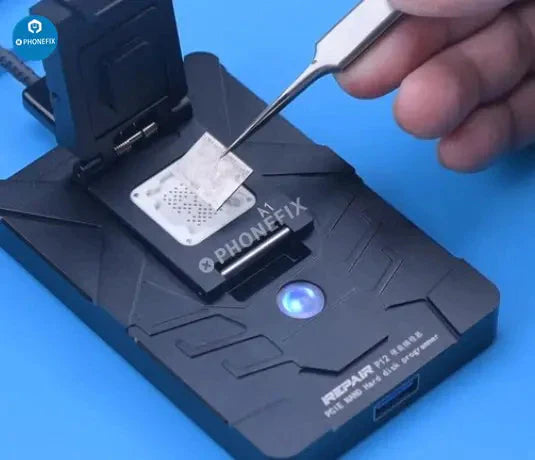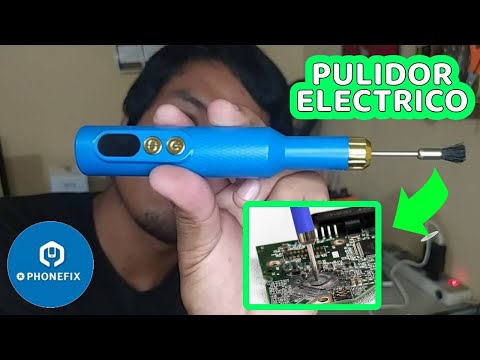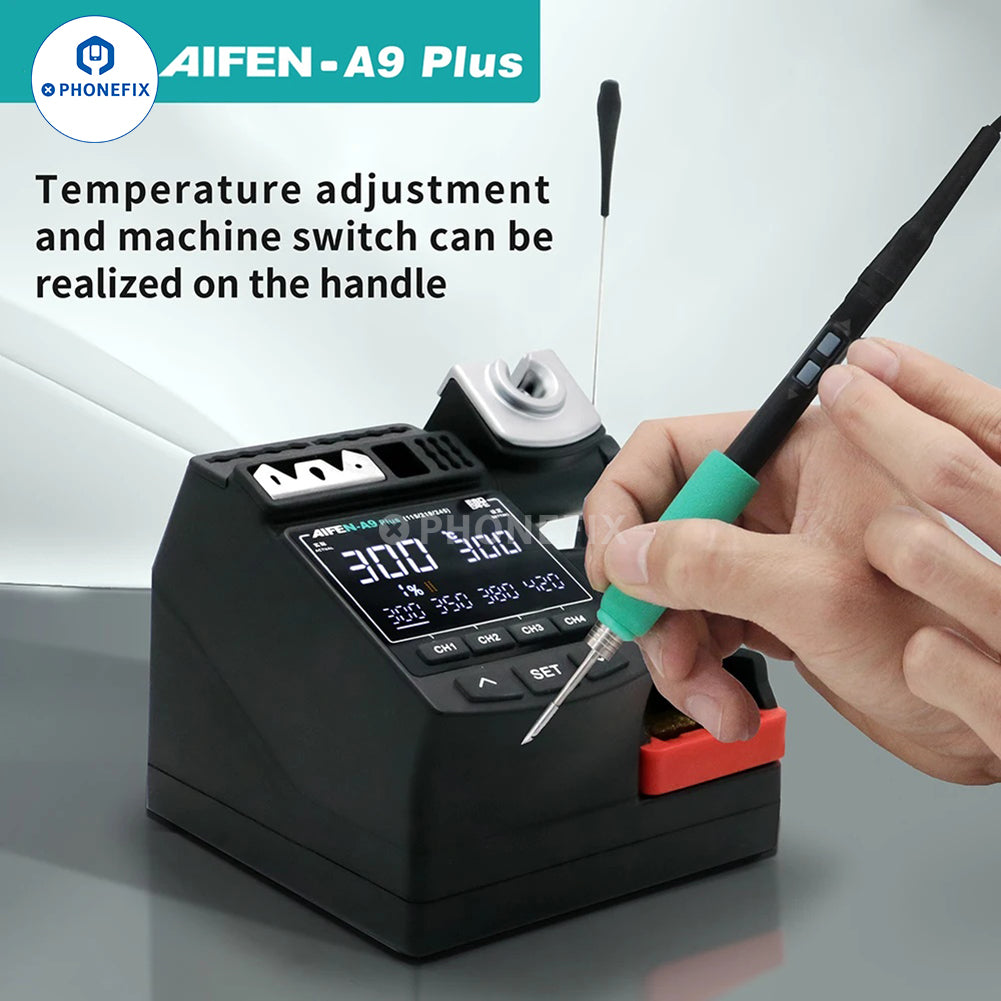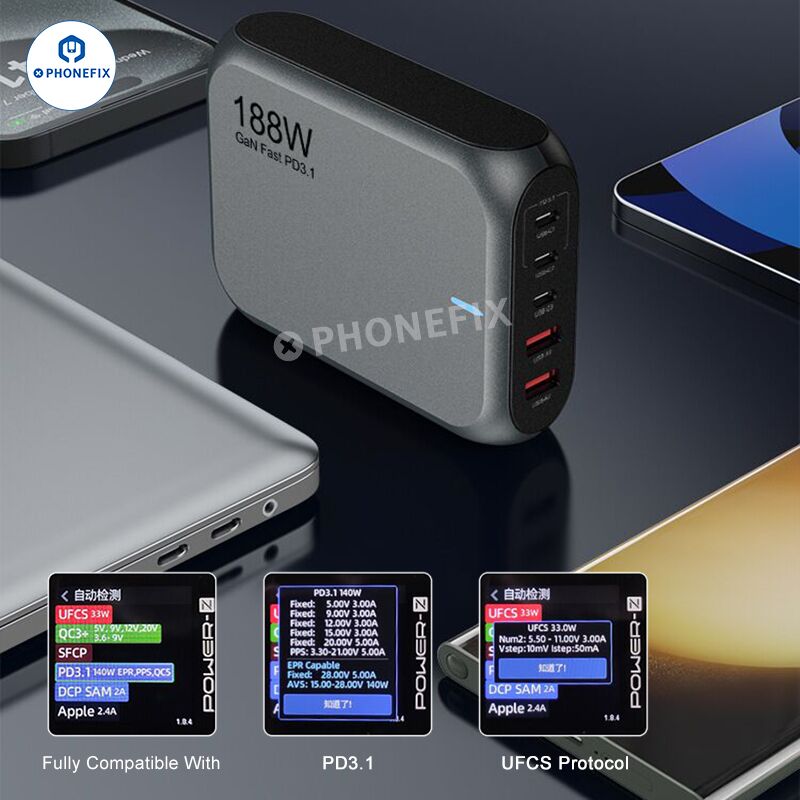
How to fix iPhone XS Won't Turn On with NAND Programmer P12?
1. Test
Disassemble the motherboard of iPhone XS, connect it the with power cable, and test current with Current Detector. The boot current only has 75 mA. So we can It can judge preliminarily that the system is faulty.

The phone is in DFU mode automatically after connected the phone XS with the computer. The flashing gets stuck at 19%, so we can confirm that the issue is induced by faulty circuits related to the NAND.
2. Remove the NAND and Save the Data
Apply high-temperature tape around the motherboard after remove the iPhone XS display and detach the motherboard. First of all, use Hot Air Gun to remove black adhesive around the NAND.

Pry up the NAND, align the NAND with the A1 pin, and then attach the NAND to P12. Click "Syscfg Backup", save the data and remove the NAND.
3. Attach the new NAND to P12
Connect the new NAND to P12 and click "User Backup" and "Program". Reball the NAND with the written data.

Put the Reballing Stencil in position, apply a layer of middle-temperature Solder Paste evenly and heat with Hot Air Gun.

Remove tin on the bonding pads and apply some middle-temperature Solder Paste with Soldering Iron. Clean the bonding pads with Solder Wick and Soldering Iron.
Remove black adhesive on the bonding pads and clean the bonding pads with PCB Cleaner. Apply some Paste Flux.
Align the new NAND and solder it on the motherboard with SUGON 9630 Hot Air Gun. Then install the motherboard and connect the phone with the computer to flash.

4. Test
The flashing has been successful and the iPhone turns on normally. The phone functions well after activation.
In a summary, a NAND programmer P12 is an essential tool to read and write the NAND data. As a common repair procedure in iPhone repair, NAND replacement is useful for storage upgrade or fixing issues like not turning on caused by a damaged NAND.












